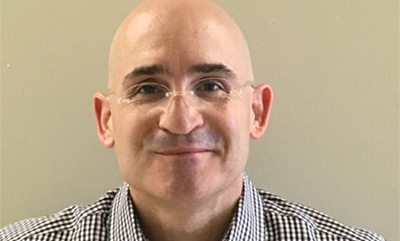‘This Crisis Has Created an Awareness of the Importance of Our Work’.
 “Working in public health, there is no typical day,” says School of Public Health alum T. Scott Troppy (SPH’98).
“Working in public health, there is no typical day,” says School of Public Health alum T. Scott Troppy (SPH’98).
These days are particularly hectic for Troppy, who has worked as a surveillance epidemiologist in the Bureau of Infectious Disease and Laboratory Sciences at the Massachusetts Department of Public Health for the past 15 years. From 7 a.m. to about 9 p.m. each day for the past several weeks, he and a team of epidemiologists at the State Public Health Laboratory in Boston’s Jamaica Plain neighborhood investigate, analyze, and track COVID-19 cases to determine the scope and impact of the pandemic throughout the Commonwealth.
Troppy works in the Office of Integrative Surveillance and Informatic Services, which manages more than 90 reportable infectious diseases through a web-based surveillance system called the Massachusetts Virtual Epidemiologic Network (MAVEN). The system enables all 351 local boards of health and state officials to communicate efficiently as they work to prevent and control infectious disease cases in Massachusetts. It receives electronic laboratory reports that map different tests to the correct diseases, and the system is continuously updated as the tests change, such as with COVID-19.
“Surveillance data is sometimes messy and challenging,” says Troppy, who oversees the MAVEN training and outreach to the local boards of health, and assists local officials with managing COVID-19 cases. “Right now, the biggest problem is with missing address and contact information—that detail is necessary to identify the appropriate local board of health and conduct an investigation of each case.”
Massachusetts is continuing to increase the number of COVID-19 tests conducted, but the percentage of people testing positive for the virus—about 13 percent as of earlier this week—is decreasing. More than 70,000 people in the Commonwealth have tested positive for COVID-19. Troppy says the sheer volume of reported COVID-19 cases that Massachusetts has experienced distinguishes it from the many other infectious diseases he has studied, but that his office has handled the volume well and is able to meet the case management needs of cities and towns.
“I work with a team of amazing epidemiologists—many of whom are SPH alums—who make the day better as we deal with the complexities of electronic monitoring in a changing environment,” says Troppy. “We need to anticipate problems while responding to whatever arises.”
Although the coronavirus pandemic is consuming most of Troppy’s focus, he is also responsible for the statewide surveillance of multidrug-resistant organisms and other healthcare-associated infections, such as CRE (Carbapenem-resistant Enterobacteriaceae)—strains of bacteria, such as E. coli, that are resistant to several classes of antibiotics.
At SPH, Troppy is a member of the Alumni Leadership Council, and he has taught both in-person and online versions of a Population Health Exchange course on how to turn complex public health data into useful and meaningful information for public health practitioners and the general public.
“For the field of epidemiology, I think this crisis has created an awareness of the importance of our work,” says Troppy—particularly the need for modeling, data visualization, and improved communication during an emergency, he adds. “I think managing data through established informatics and surveillance methods is key to managing a surveillance during pandemic and non-pandemic times.”